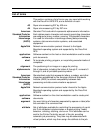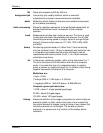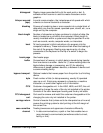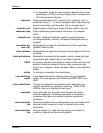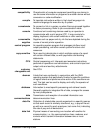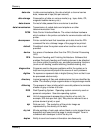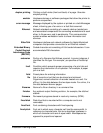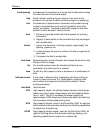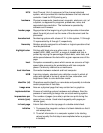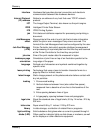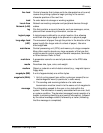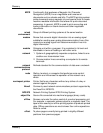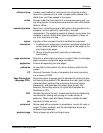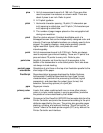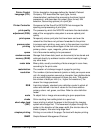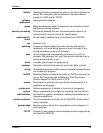
Glossary
Installation Planning Guide 11
HCU Host Channel Unit. A component of the channel-attached
system, which provides the interface between the host channel
controller. Used for IPDS printing only.
hardware Physical components (mechanical, magnetic, electronic, etc.) of
a system, as opposed to programs, procedures, rules, and
associated documentation. The hardware is operated by
software and firmware.
header page Page printed at the beginning of a job that provides information
about the print job, such as the name of the document and the
job sender.
hexadecimal Numbering system with a base of 16. In this system, 10 through
15 represented by A through F, respectively.
hierarchy Relative priority assigned to arithmetic or logical operations that
must be performed.
highlight color Printing with black plus one other color in a single pass. In
models 4850, 4890, and 92C, a range of shades and tints is
printed by varying the percentage of black dots, color dots, and
white space between the dots within a given square area of the
page.
host Computer accessed by users which serves as a source of high-
speed data processing for workstations with less computer
power. Commonly referred to as mainframe.
host interface Connection between network and host computer.
HSB A printing industry standard color definition model in which all
colors are defined in terms of values for hue, saturation, and
brightness. Refer to color definition model.
identifier (id) Characters used to identify or name data and possibly to indicate
certain properties of that data.
image area Area on a physical page that may contain text or graphics.
implementation Process of installing system hardware and software. Also the
process of converting a design into an actual working system.
impressions per
minute (ipm)
The number of pages (one side) a printer can print during the
space of one minute. Used interchangeably with pages per
minute (ppm).
in-front page A term that refers to the top page of a double-sided sheet.
initialize 1. To prepare the magnetic surface of a blank diskette so that it
can accept data.
2. To set all information in a computer system to its starting
values (usually the first step is accomplished when a program
is booted).



